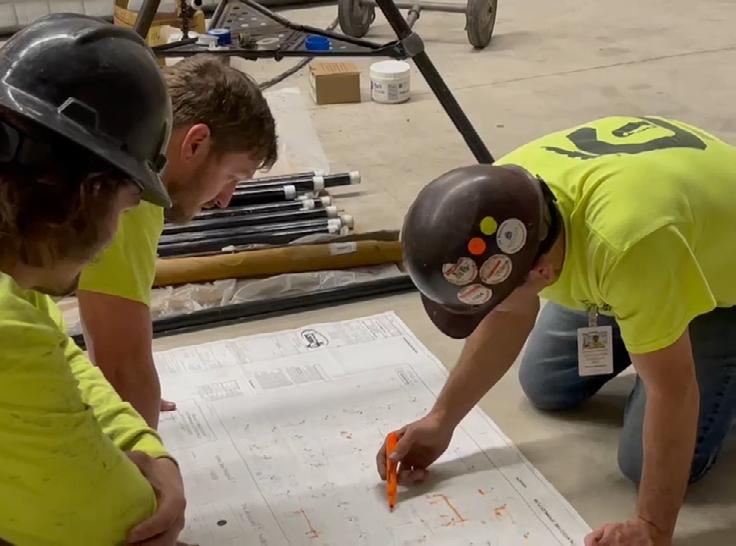
1 minute read
MANUFACTURED STRUCTURED SCHEDULING SYSTEM
from INTEGRATED PROJECT DELIVERY SYSTEM (IPD) utilizing DESIGN for MANUFACTURING & ASSEMBLY (DfMA) -2
MMA, in collaboration with our collective team members, focuses on a Manufactured Structured Scheduling System. Our Mission is:

To transform our projects sites to a factory floor.
To develop a structured schedule for every vendor.
To ensure that all vendors complete their required work within our designated time frames.
To instill a “consistent pattern of behavior” mindset in our installers.
Production schedules are more important than ever before, especially considering the increased sophistication in manufacturing methods and the software necessary to manage production in a more precise manner, while also accounting for the increased complexity of global supply chains. Utilizing our well-defined production schedule that is based on accurate data inputs, our production schedules can be changed and adjusted to address temporary shifts in production requirements caused by seasonality, rapidly evolving consumer preferences and other disruptions.
Planning
In production scheduling, the role of planning is to utilize the company’s resources to maintain consistency, reduce downtime and mitigate bottlenecks to optimize production.
Scheduling
Utilizes the established planning level to produce goods from components or raw materials. It is timebased and must satisfy the demand established at the planning level. These timetables can be department-specific, product specific, and process specific.Master production schedules are used at the highest level, defining the product tim frames. While sub-schedules may be department specific for subassemblies or for mixes and blends.
Routing
In discreet manufacturing, final products are made from a lengthy and complex series of sub-processes. A bill of materials may be used to dictate what items are required and in what quantity. Routing maps out the flow of required process steps and dictates the path and sequence of performed operations. Including steps that must be done in-house and those components that may need to be sub-contracted and then returned to the production flow for final assembly.









